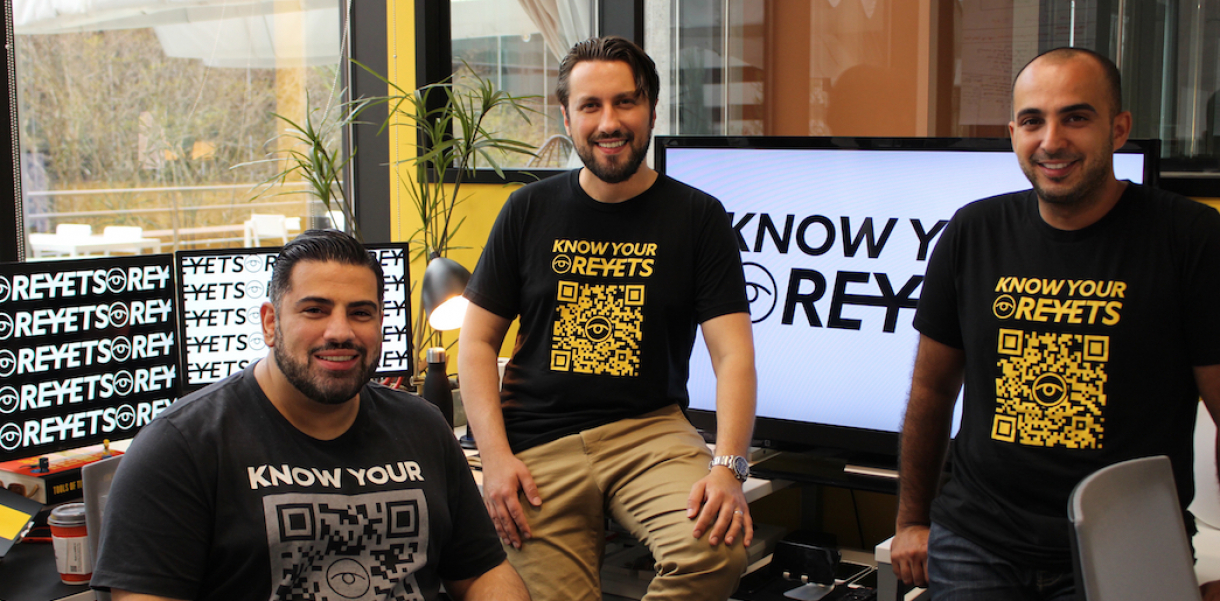What’s the design?
Reyets is an app that transforms your phone into a community-driven powerhouse for change. Through the app, US citizens facing injustice can contact lawyers, get educated on their rights or in collaboration with others, source knowledge and data for demanding policy changes. Initially focused on being a tool for recording injustices and distributing them quickly to the press and social media, today, Reyets is an all-in-one tool for supporting the civil rights movement. The first version of the app was launched in January 2020 and is now being piloted in two communities in Chicago.
The hurdle
In 2017, the future Founder and CEO of Reyets Wa’il Ashshowwaf decided he wanted to use technology to help people know their rights. Seeing recordings of injustices reminded him of his own arrest 25 years ago, where he learned that knowing your rights is the only way to be protected: “The beginning of Reyets was about creating transparency, and our mission became reducing police misconduct and protecting people's rights.”
But with a clear mission came the first overarching challenge for the new impact founder: “How do you keep that mission sacred?” For many founders, building up a brand, funding and a business model often comes with tweaking the focus or, sadly, compromising on impact.
“One of the biggest learnings I’ve had is how to align your impact mission with the rest of your business,” he says. “We’ve focused on four things that need to be in alignment with your impact for your startup to work: Your solution, your customers, your brand and your investors.”
The strategy
Aligning the product with the mission wasn’t a no-brainer for Reyets to begin with: “Essentially, we were like a solution in search of a problem,” he remembers. “Our mission was to help protect people's civil rights and reduce misconduct, so we created a camera app that live-streams and backs up the videos. But then we thought: ‘Wait, what we're really doing is making people create more videos — is that really helping people protect their rights?” From there, Reyets transformed their product to focus more on enabling communities to assert rights and change laws, which then came to align with their mission.
They asked the same questions regarding their customer and found some game-changing insights too. “Sometimes your customer and your user might not be the same person, even though they can be seen as that,” says Ashshowwaf. “We realised our users were the citizens on the streets using the app in different communities, but the ones paying for it? That’s the organisations.”
“When deciding on the brand, we asked ourselves: ‘Why do we care about solving this problem?’ And we realised that when you're solving problems you have to take a side,” Ashshowwaf remembers. “You can't just be generic. You have to decide early on what side you're going to take, and our users really enjoyed the message of empowerment over the message of being scared.”
Finding investors was equally a learning opportunity: “As an impact startup we'll usually start with our mission, but investors are often money-driven. A big lesson for me has been discussing return on investment early on, and saying we have a longer horizon for generating revenue compared to non-impact startups,” says Ashshowwaf. “Being upfront in our approach allowed me to better connect with investors that value both profit and impact, instead of wasting time trying to changing the minds of traditional investors.”
Finding investors aligned with the mission meant less, but more rewarding conversations for Reyets. “At least the people you do have conversations with are people that see value in your impact.”
Tips from the designer
- Keep your eyes on your mission – If you’re truly an impact business, you can’t dilute your mission. It should be the core to your solution, customers, brand and investors. Some compromise is inevitable but you risk losing impact if you change just to secure funding.
- Know the ‘Who, what and why’ – It might be obvious but many businesses fail to truly define these. You might think you know exactly who you are, who you serve and why you do it, but are they clearly defined and is there a consensus within your company or organisation? Without a team on the same page, building a solid foundation is like building on sand.
- Be honest with investors – Of course, painting a happy picture is what we’re conditioned to do when pitching a business. But it might not lead to the right investors. Be frank about the situation and the numbers, you might find investors are comfortable with risk and if they’re right for you, they’ll value the impact just as much as the returns.



